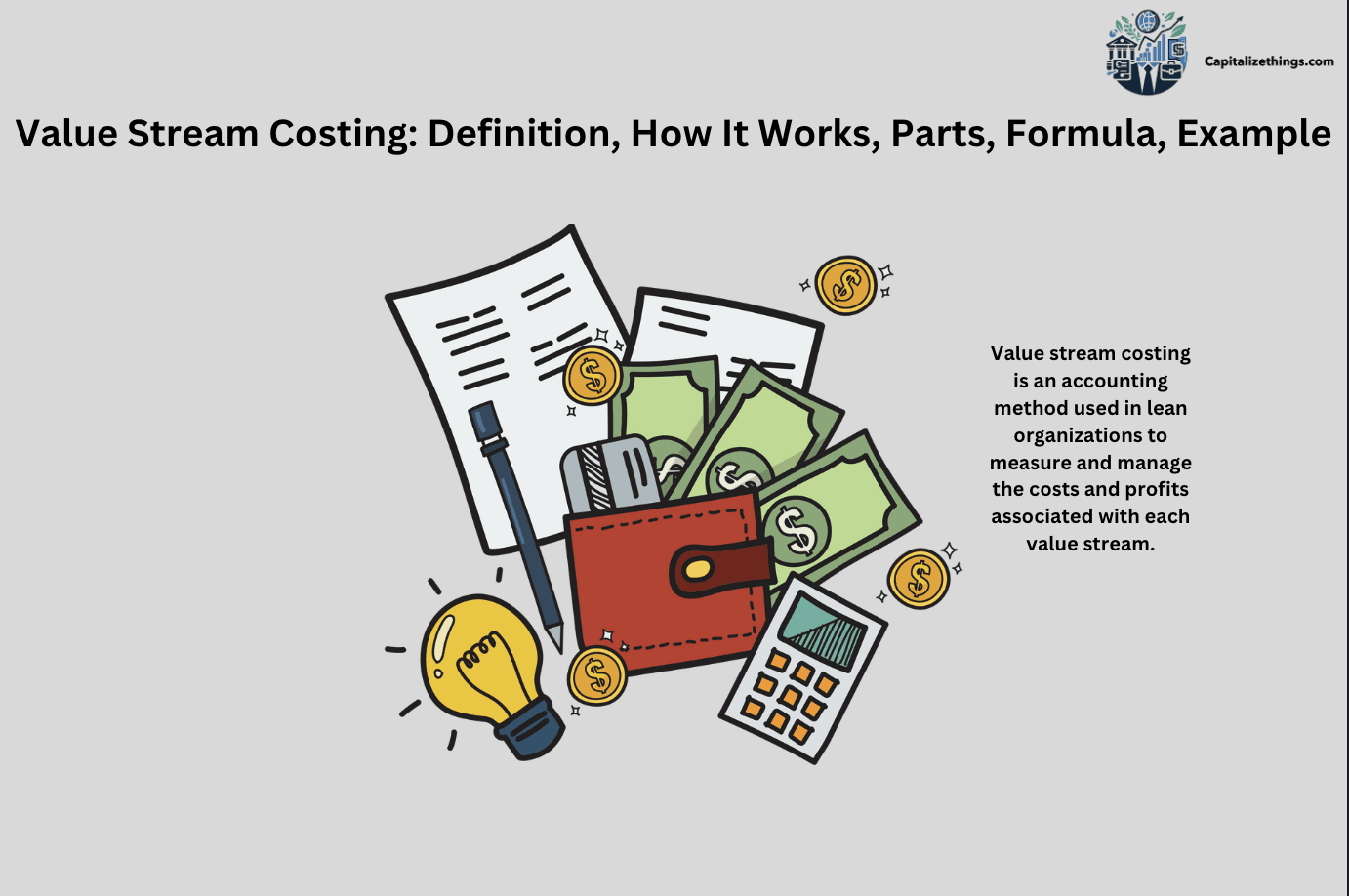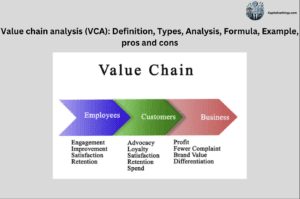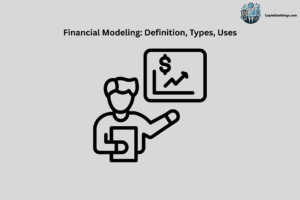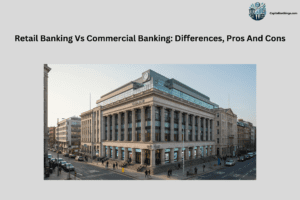Value move costing is an accounting approach focused on the fees associated with unique value streams within a company. A price circulation consists of all the steps needed to convey a product or services from idea to shipping. This technique is normally used in lean production to boost efficiency and reduce waste, fostering non-stop improvement.
Value flow costing works by assigning all direct and oblique expenses to a cost circulation, rather than to individual merchandise or departments. This approach gives a clear image of profitability by highlighting expenses related to each flow. It encourages agencies to pay attention to give up-to-quit tactics and supports better selection-making by way of identifying high-fee regions and possibilities for development.
The main components of value flow costing encompass direct expenses, oblique prices, fee flow profitability, cost allocation, and non-stop development metrics. Direct fees are the ones at once tied to manufacturing, together with labor, materials, and machinery. Indirect expenses encompass overhead prices like utilities, rent, and administrative charges. Value stream profitability measures the overall earnings or loss of a value circulated. Cost allocation methods are used to distribute expenses amongst one of a kind streams. Continuous improvement metrics like lead time and cycle time assist pressure process improvements.
The formulation for value stream costing entails summing direct and indirect costs: Value Stream Cost = Direct Costs + Indirect Costs. To calculate profitability, subtract the price circulation price from revenue: Value Stream Profit = Revenue – Value Stream Cost. For example, if an enterprise has direct expenses of $100,000 and indirect costs of $50,000 for Product A, and the revenue is $200,000, the value flow earnings could be $50,000.
Transform your business with our value stream costing implementation service. Our experts at CapitalizeThings.com will guide you through the entire process. Contact +1 (323)-456-9123 to book your free 15-minute assessment and take the first step towards optimizing your value chain.
What Is Value Stream Costing?
In finance, Value Stream Costing is a way to discover the costs of making items or offerings. It appears at all of the steps in a value movement. A value movement is all the actions had to make a product, from the start to the quit. Value move costing facilitates find costs which can be too high and suggests wherein cash is spent. It facilitates improve work via displaying which steps add cost.
Value circulation costing appears at both direct fees and indirect expenses. It helps groups see the big photo of their paintings. This approach facilitates humans make suitable choices by means of showing the entire price. By specializing in all steps, value movement costing makes work extra clean and helps save money.
What Is A Value Stream In Simple Words?
A value stream is all of the steps needed to make a product or services. It starts while an idea is fashioned and ends whilst the product is within the arms of the consumer. Each step needs to add cost, this means that it ought to assist make the product better. If a step does not help, it’s far seen as waste. Value streams display how paintings flow in a crew or corporation.
They help discover slow components, waste, and issues. The goal is to make every step within the value stream count. Making the stairs higher and quicker can help keep money and time. Value streams are used to locate approaches to improve work and make customers happy.
What Is Value Stream In Lean Management?
A Value stream in lean management shows all of the steps to make a product or services. Each step must add cost, meaning it helps make the product higher or quicker. Lean management pursuits to reduce waste and enhance float. Value streams assist locate gradual or wasteful steps. This awareness of value makes paintings smoother and extra green. When groups use value streams, they see what needs solving. It makes the system simpler and enables all people to work higher together.
Lean management uses price streams to make paintings clean and to preserve and improve. It suggests what is wanted and what can be eliminated. This facilitates store time, reduces fees, and makes clients satisfied with the aid of delivering right merchandise faster.
What Are The Fundamentals Of Value Stream Costing?
The fundamentals of value stream costing contain knowledge of the charges of all steps in creating a product. It consists of direct charges like substances and exertions and oblique prices like overhead. The goal is to find the whole value of every value stream. It indicates where cash goes and enables in reducing waste. By tracking costs this way, teams see the huge photograph and discover ways to make paintings inexpensive and faster.
This method is ready to understand every value, so nothing gets missed. Value move costing supports non-stop improvement by way of specializing in efficiency. It also helps groups set expenses better. The aim is usually to enhance value and reduce waste. This approach blessings both the employer and the customers.
How Does Value Stream Costing Work?
Value stream costing works by using searching at all of the steps needed to make a product. It provides up all direct and oblique costs tied to a price circulate. Direct prices are materials and exertions. Indirect costs are things like utilities and lease. This method helps discover which parts of a move value an excessive amount of. It makes teams think about every step and how much it prices.
It suggests which steps add value and which do not. The purpose is to reduce waste and make work higher. Value move costing is a device to peer where the cash is spent. It enables organizations to decide what to keep and what to change. This method ends in more financial savings and smoother procedures.
What Is The Value Stream Method?
The value stream method is a way to see how paintings flow in an organization. It shows every step had to make a product. It starts from a concept and ends with a completed product. This technique allows groups to find steps that do not upload value. It facilitates making work smoother by means of cutting out waste. The cost circulate approach makes a speciality of efficiency. It shows how to make each step better. It seems on the whole method, not just components. This facilitates locating issues and fixing them quickly. By the usage of this method, groups could make matters faster and less expensive. It is ready, seeing the entire photo and making every step remember. This technique leads to better results and happier customers.
What Are The Different Parts Of Value Stream Costing?
The 5 major parts of value stream costing are:
- Direct Costs: These are charges directly related to making the product, like substances and hard work.
- Indirect Costs: These consist of overhead costs like rent, utilities, and management salaries.
- Value Stream Profitability: The overall earnings or loss for a value circulation.
- Cost Allocation: Methods to spread expenses throughout cost streams.
- Continuous Improvement Metrics: Tools like lead time to help improve procedures.
What Is The Formula For Calculating Value Stream Costing?
The formula for Value Stream Costing is: Total Cost = Direct Material + Direct Labor + Direct Machine + Direct Facility + Support Expenses. It adds up direct and indirect prices in a value. Direct charges are materials and hard work. Indirect charges are overhead like hire and utilities. The method is: Value Stream Cost = Direct Costs + Indirect Costs. To locate the earnings, subtract the cost circulate from the whole revenue.
This system enables us to see actual costs. It makes it smooth to find where cash is spent. Knowing this enables me to make better choices. This component supports lean questioning by means of specializing in reducing waste and improving price. The aim is continually to spend less and get extra cost.
What Is An Example Of A Value Stream Costing?
An example of value stream costing is like think about an organization that makes toys. They have price streams: vehicles and dolls. For the auto movement, direct costs like materials and exertions are $100,000. Indirect costs like hire and utilities are $50,000. The cost stream fee is $150,000. If the revenue is $200,000, the earnings are $50,000.
This indicates how value flow costing works. It enables see in which cash is made and lost. For the doll move, the expense is probably distinctive. This method helps find excessive-price regions and possibilities to store cash. It offers a clear picture of the prices for every circulation. This makes it less difficult to improve processes and reduce waste. Knowing these numbers facilitates making clever choices.
What Are The Risks And Benefits Of Value Stream Costing?
Value stream costing has risks and benefits. The principal threat is lacking hidden costs that may result in horrific alternatives. It additionally requires careful tracking of each step, which takes time. The benefits include higher manipulation of fees and improved processes. It facilitates in finding waste and reducing it. This ends in extra financial savings.
Knowing wherein the money is going helps in pricing and budgeting higher. Value circulate costing supports lean control by specializing in including value and lowering waste. It makes paintings smoother and more powerful. The advantages outweigh the dangers if finished right. This method facilitates teams to see the huge image and keeps them centered on development.
What Does A Value Stream Manager Do?
A value stream manager looks after the glide of labor in an agency. They take a look at every step to make sure it adds value. They work to reduce waste and enhance efficiency. The cost move manager helps groups see where they could do higher. They hold a watch on prices and discover methods to save.
They cognizance of making the technique smooth from start to finish. The supervisor works with all groups to ensure dreams are met. They search for ways to speed up paintings and cut fees. They use facts to make decisions and manual teams. This function is fundamental to keeping things jogging properly. The manager guarantees every step, provides price and meets client needs.
How Do You Document A Value Stream?
To document a value stream, create a visual map showing each step in a process, including time, resources, and information flow. Documenting a value stream approach showing each step had to make a product. Start with a map that shows the go with the flow from begin to stop. List all steps, instances, and charges. Mark steps that add value and people that do not. Use easy phrases and snap shots for smooth know-how. This helps teams see the whole system. For example, a bakery might map steps from blending dough to turning in bread.
Each step is checked for time, cost, and fee. Documenting enables locating gradual or wasteful steps. It makes work simpler to understand and improve. This continues all people on the same web page and focused on dreams. It allows planning and solving issues quicker.
What Is The Value Stream In The Manufacturing Industry?
The value stream in manufacturing is the sequence of activities and processes that transform raw materials into finished products, adding value at each step. In manufacturing, a cost circulate indicates all the steps to make a product. It starts off evolving with raw materials and ends with a completed object prepared for sale. Each step must add fee or it’s far seen as waste. Value streams assist locate sluggish or costly steps. This makes it easier to cut waste and save money.
Manufacturers use value streams to peer the whole manner really. It facilitates find regions that need solving. By improving each step, the whole procedure receives better. This leads to more savings and faster paintings. Value streams in manufacturing goal for nice and velocity. The purpose is to deliver amazing merchandise with fewer fees. This maintains clients satisfied and builds strong businesses.
What Exactly Is Value Stream Costing And How Should It Be Treated For Accounting Purposes?
Value stream costing is a manner to song all prices in a value circulation. It shows both direct and oblique prices. In accounting, it should be treated as a manner to peer the proper fees of creating goods. This technique allows for pricing and budgeting. It helps find waste and saves money. It is set seeing where cash is spent. Value stream costing allows agencies to make clever selections by means of showing clean numbers.
It suits properly with lean thinking, which makes a speciality of lowering waste and adding price. This technique ought to be part of ordinary accounting practices. It facilitates groups to stay centered on what topics. It keeps anybody aligned on goals. Value circulate costing gives a real take a look at prices and earnings.
What Is Harrison Manufacturing Value Stream Costing Example?
Harrison Manufacturing uses value stream costing to allocate costs directly to product families rather than individual products, streamlining cost accounting in lean production environments. Harrison Manufacturing makes use of value movement costing to discover expenses.
They examine every step to see where money is going. For example, they take a look at the cost of uncooked materials, labor, and gadget time. They add up those charges for every fee movement. If costs are too excessive, they discover methods to restore them. This could imply the use of fewer materials or slicing time spent. Harrison Manufacturing also looks at fees for such things as power or space. They see which areas need change and enhance them.
This allows them to make products better and inexpensive. Harrison uses cost stream costing to store cash and reduce waste. They need to improve steps so products value less and clients live gladly.
In What Fields Does Value Stream Costing Help?
Value flow costing facilitates in lots of fields. It suggests where to store cash and make work better. Here are a few sectors:
- Manufacturing: Optimizes production processes and reduces waste in product assembly lines.
- Healthcare: Improves patient care workflows and resource allocation in hospitals and clinics.
- Logistics: Enhances supply chain efficiency and transportation routes for goods delivery.
- Retail: Streamlines inventory management and customer service processes in stores.
- Banking: Improves financial service delivery and transaction processing for customers.
- Automotive: Optimizes vehicle production and supply chain management in car manufacturing.
- Aerospace: Enhances aircraft design, production, and maintenance processes.
- Food Processing: Improves food production, packaging, and distribution efficiency.
- Education: Optimizes administrative processes and resource allocation in schools and universities.
- Pharmaceuticals: Enhances drug development, production, and distribution processes.
- Oil and Gas: Improves exploration, extraction, and refining processes in the energy sector.
- Chemicals: Optimizes chemical production, safety protocols, and waste management.
- Electronics: Enhances product design, assembly, and quality control in electronic manufacturing.
- Construction: Improves project planning, resource allocation, and site management in building.
- Telecommunications: Optimizes network infrastructure and service delivery for communication providers.
- Information Technology: Enhances software development, IT service delivery, and data management.
- Insurance: Improves claim processing, risk assessment, and customer service in insurance companies.
- Hospitality: Optimizes guest services, resource management, and operational efficiency in hotels and restaurants.
- Agriculture: Enhances crop management, livestock care, and farm equipment utilization.
- Public Services: Improves government service delivery, resource allocation, and administrative processes.
How To Create A Value Stream Income Statement?
To create a value stream income statement, begin by using a list of all cost streams, then add all sales from every move. Next, write down all fees, consisting of direct and indirect costs. Subtract overall expenses from total revenue for every move. This gives you the profit or loss for each cost move. Make sure to include expenses for labor, materials, and overhead.
Each value circulation suggests its own income or loss. This allows us to see which streams do nicely and which want work. Arrange all data surely so it is straightforward to read. By doing this, you’re making it clear how an awful lot each stream makes. The aim is to make better alternatives by seeing real fees.
Get a professional review of your current financial statements and learn how to integrate value stream principles. Our experienced consultants at capitalizethings.com are just a phone call away at +1 (323)-456-9123.
What Is The Income Statement For The Variable Costing Method?
The variable costing income statement reports revenues minus variable costs to show contribution margin, then subtracts fixed costs to calculate net operating income. Variable costs alternate with the level of output. They can include substances, labor, and power charges. The declaration indicates how tons are left after these charges are taken out from sales. Fixed prices, like lease and salaries, do no longer exchange and are listed one at a time.
First, you discover the gross earnings through subtracting variable expenses from income. Then, take out fixed fees to discover the net earnings. This way, the earnings assertion suggests the actual income made from promoting goods. It facilitates managers to see where cash is spent. It also suggests if expenses need to change to cowl fees.
What Is The Value Stream Income Statement Can Be Compared To?
A value stream income statement can be compared to a traditional income statement and a variable costing income statement. Both display fees and earnings, however they do it differently. Traditional statements focus on each product or branch. Value move statements pay attention to the whole price move. Another comparison is with a variable costing announcement.
Variable costing looks at charges that exchange with output. Both assist in understanding actual charges. Managers use those comparisons to decide which to cut costs. Value circulate earnings statements also can be compared to traditional costing structures. This enables us to see the blessings of 1 over the alternative. Comparing enables in finding which method works pleasant. It suggests clear numbers and of course clever decisions.
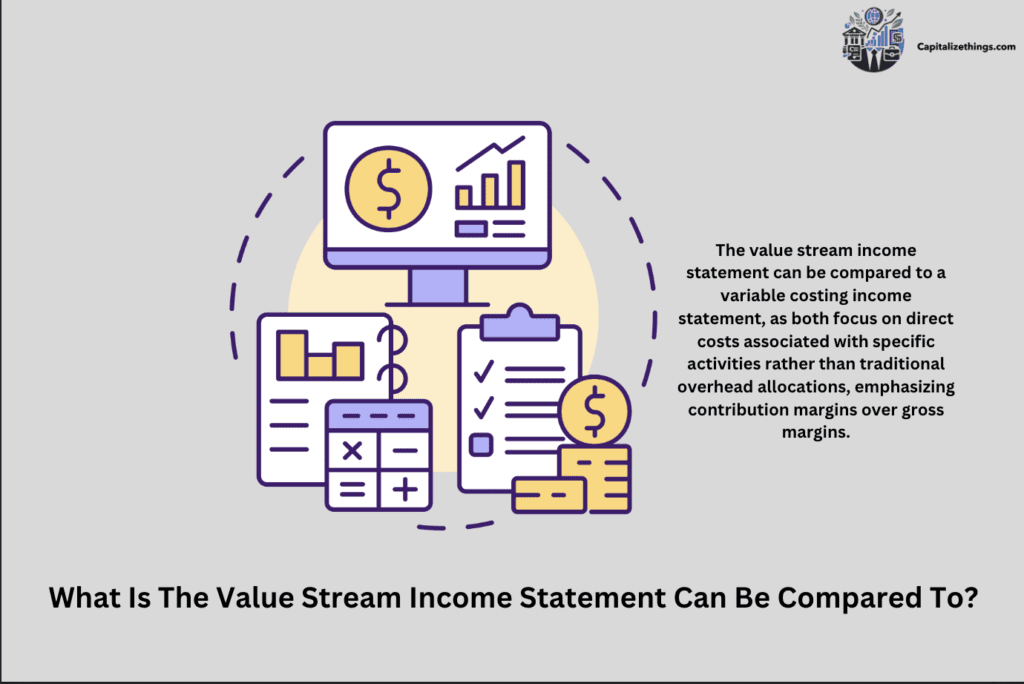
What Is The Value Stream In A Supply Chain?
A value stream in a supply chain is the sequence of activities needed to supply a product. It starts from uncooked substances and ends while the product reaches the patron. Each step needs to add a price. If it does no longer, it’s far taken into consideration waste. Value streams assist in discovering sluggish steps, delays, or errors.
In a delivery chain, they assist groups to see the huge image. They are conscious of making each step better. By doing this, agencies can save money and time. They also improve how they serve their customers. When a supply chain uses value stream mapping, it works smoother. It suggests wherein adjustments want to be made. This makes the supply chain quicker and extra effective.
How To Calculate The Cost Of Supply Chain With VSM?
To calculate the cost of a supply chain with Value Stream Mapping (VSM), first list all steps in the chain. Next, upload all direct expenses like labor and substances for every step. Then, add indirect costs like electricity or storage. Add up all charges to locate the overall value for the delivery chain. Look for regions that price too much and consider adjustments.
Use VSM to see where delays or waste show up. Cut down steps that don’t upload value. This makes the delivery chain cheaper and quicker. The purpose is to keep simplest the steps that rely. By the use of VSM, companies can see the way to save extra and do higher.
How To Calculate Value Stream Costing For Logistics?
To calculate value stream costing for logistics, list all steps involved in moving goods. Next, be aware of costs for each step, like transportation, storage, and managing. Add direct prices, which includes fuel and hard work, and oblique charges like storage lease or utilities. Add them up to find the entire value of logistics.
Use value movement maps to spot high-value areas. Cut out steps that don’t upload value. Focus on reducing waste, which includes waiting time or greater dealing with. By doing this, the logistics will become faster and cheaper. This allows groups to keep cash and serve customers higher. It shows clean areas where charges can drop. Each step is checked to peer if it adds cost.
What Are The Primary Objectives Of Costing?
The primary objectives of costing are to find all costs and manage them well. First, it helps to understand where money goes. It indicates the fee of making services or products. This helps set the right fees. Second, it facilitates reducing waste and storing cash. Third, costing facilitates in planning and making smart picks. By understanding real costs, teams can improve steps which can be gradual or steeply-priced. Fourth, costing allows in measuring income.
It shows how much every product or service makes. Lastly, it enables us to keep track of resources. This approaches the usage of cash, exertions, and substances higher. Costing makes positive that every step provides value. It courses human beings to make better choices with clear numbers.
What Is Lean Costing In Accounting?
Lean costing in accounting focuses on identifying waste and eliminating it, It evaluates each step in a system to analyze the costs involved. The purpose is to save time, money, and effort. Lean costing helps companies become more efficient by finding value and maintaining the most effective way to improve products. It uses simple methods to find the true cost, helping businesses make informed decisions by revealing actual expenses. This enables them to remove steps that don’t add value. Lean costing allows companies to remain competitive by being lean and smart. It emphasizes doing more with less and helps improve processes while saving money.
What Are Value Streams In Manufacturing?
Value streams in manufacturing represent all steps required to produce a product. It begins with raw materials and ends when the product is ready for customers. Each step should add value, like assembling parts or testing products. If a step doesn’t add value, it is considered waste. Value streams help identify where time or money is wasted and assist in making processes faster and more cost-effective. In manufacturing, value streams guide teams in identifying and fixing issues, improving product quality. They allow teams to see the entire process clearly. Each step is checked for its contribution. By focusing on value streams, companies make smarter decisions.
What Is The Machine Parts Value Stream Costing Formula?
The machine parts value stream costing formula is Value Stream Cost = Direct Costs + Indirect Costs, it adds up all costs involved in producing parts. It considers both direct costs, like labor and materials, and indirect costs, like utilities or rent. To calculate profit, subtract the total cost from total revenue.
This helps identify which parts are profitable. If costs are high, steps can be adjusted. Value stream maps can be used to identify waste in time or money. Eliminate steps that don’t add value. The formula assists in making better decisions and shows where costs need to be reduced, leading to smoother and more efficient work.
How To Apply Value Stream Costing In Lean Management?
To apply value stream costing in lean management, list all steps in the process. Then, sum up all direct and indirect costs for each step. Use value stream maps to identify where waste occurs and eliminate steps that don’t add value. Focus on reducing delays, mistakes, or wasted materials. The goal is to improve each step, making the process faster and more cost-effective.
Lean management uses value stream costing to make smarter decisions by revealing real costs. By focusing on every step, companies save money and serve customers better. Lean management guides teams to see the complete picture and act wisely.
Access Our Expert-Led Webinars, designed to guide you through the intricacies of lean management and value stream costing. Visit capitalizethings.com, and feel free to call +1 (323)-456-9123 for more information or reach out to us via email through our services form and mention about how to participate in our complimentary sessions.
What Is Traditional Costing In Cost Accounting?
Traditional costing in cost accounting calculates the expenses of producing products or services, It separates costs into direct costs, like labor and materials, and indirect costs, like rent or utilities. Traditional costing assigns costs to departments or products but does not look at the overall system. It is commonly used in older accounting systems. Traditional costing helps set prices, but it may miss some hidden costs. It doesn’t focus on eliminating waste or reducing delays, making it less efficient than value stream costing. Traditional costing is best suited for simple processes but doesn’t provide a comprehensive view for major improvements.
What Is The Difference Between Traditional Costing And Activity-Based Costing?
Traditional costing and hobby-primarily based costing (ABC) are two approaches to locate prices. Traditional costing adds prices primarily based on one thing, like gadget hours. It is less complicated but won’t be accurate. ABC unearths costs through searching at many sports. It is more detailed and indicates which steps price more. Traditional costing is good for simple responsibilities.
ABC facilitates complicated tasks. Traditional costing is rapid and clean. ABC takes time and money to set up. Traditional costing can result in incorrect alternatives as it does not now display actual prices. ABC offers the real fee and enables higher selections. Both have advantages and risks. For some obligations, one way may be higher than the alternative. Teams must select the one that allows them the most. Check the table below for rapid information:
| Key Points | Traditional Costing | Activity-Based Costing (ABC) |
|---|---|---|
| Basis of Allocation | Single factor like labor or machine hours | Multiple activities |
| Accuracy | Less accurate | More accurate |
| Complexity | Simple | Complex |
| Cost to Implement | Low | High |
| Suitable For | Simple tasks | Complex tasks |
What Is Traditional Costing Job Order Costing?
Traditional costing assigns prices by adding all expenses for a specific job or process. A job can be any assignment that desires unique paintings, like making custom merchandise. Each activity has its very own fee sheet. Costs are brought based totally on materials, labor, and machine time used. This approach enables us to realize how much a job costs.
It is simple and easy to apply. It is ideal for organizations that make particular goods. This technique no longer shows the cost of each small step. This can result in incorrect picks. It works pleasant when jobs are not equal. Each process is treated as an unmarried unit. Companies use this technique to rate merchandise and maintain track of expenses. It is easy however might not be correct for every activity.
What Is The Product Cost in Abc Costing?
Product cost in ABC costing is the total cost of making a product by summing direct costs (like materials and labor) and indirect costs (like machines and tools) for each value-adding step. It provides up to all prices from each step that adds value. It consists of direct expenses like materials and hard work. It also includes indirect prices like machines and tools.
ABC costing reveals the fee for every step of work. This shows the proper cost of creating a product. It is higher than the old manner, which adds prices based on one issue. ABC costing helps groups locate steps that price too much. They can cut waste and keep cash. This technique suggests hidden costs. It takes time and money to set up. ABC costing is high-quality for large obligations. It allows companies to make proper choices. This manner, they recognise where they spend their money.
What Are The 4 Steps Of ABC Costing?
ABC costing has four steps to find fees. First, locate all of the sports within the paintings. These are the steps needed to make a product. Second, discover the fee for every activity. Look at how much time, substances, and equipment each step wishes. Third, find out how an awful lot each product uses every interest. Fourth, upload the expenses for every product.
This will deliver the authentic price. Each step is apparent and easy. It suggests how cash is used in every part of work. Teams use these steps to see which parts cost extra. This way, they could make higher selections. The aim is to find ways to save time and money. ABC costing helps teams see the large photo and reduce waste.
What Are The 5 Levels Of Activity In Abc Costing?
There are 5 ranges of interest in ABC costing. The first is unit-stage. These are tasks finished for each object, like assembly. The second is batch-degree. These are tasks performed for a collection of gadgets, like setup. The 0.33 is product-degree. These responsibilities help every product type, like design. The fourth is customer-level. These tasks serve every purchaser, like sales.
The 5th is business enterprise-stage. These tasks help the whole employer, like management. Each stage indicates how charges are used. Teams discover which level costs more. This facilitates them to know in which to reduce waste. ABC costing is unique. It helps teams see each cost. It is ideal for locating hidden fees. Teams use these tiers to make good alternatives.
What Is The Difference Between Product Costing And Activity-Based Costing?
Product costing unearths the whole fee to make a product. It includes costs for substances, labor, and overhead. It does not observe every small step. Activity-primarily based costing (ABC) is unique. It finds the value for each interest or step. It seems that money and time are spent. ABC gives a clearer photo. Product costing is rapid however not usually correct.
ABC takes more time and is extra special. Product costing is high-quality for easy tasks. ABC allows for complex duties. Both strategies have blessings and dangers. Teams choose the only that enables them the most. Some teams may use both methods together. The desire relies upon what the team needs to realize. This enables them to make smart picks.
What Is The Value Stream Costing For Aluminum Wheels?
Value stream costing for aluminum wheels calculates the total cost by analyzing all steps, from cutting to shaping and finishing. This consists of reducing, shaping, and finishing. It provides up direct costs like substances and labor. It additionally provides oblique expenses like machines and overhead.
Value movement costing indicates which steps price more. This helps find waste and cut it. Teams can see where to keep cash. This approach is right for displaying the true fee. It enables making higher alternatives. By searching in any respect steps, teams recognise wherein to improve. The purpose is to make work smooth and save cash. Value move costing offers a big image of prices. It allows smart choices for the future.
Is Vsm And Value Stream Costing The Same?
No, VSM (Value Stream Mapping) and price movement costing are not the same. VSM appears at how work flows in a team or organization. It suggests every step to make a product. It facilitates locating waste and slow elements. Value movement costing reveals the price for every step in a cost circulate. It adds direct and indirect expenses.
VSM focuses on work steps. Value flow costing makes a speciality of cash. Both assist teams see the massive picture. They display wherein to improve. VSM is a tool to see work. Value circulate costing is a tool to look at fees. Both are utilized in lean work. They assist in discovering methods to save time and money. Teams use both to make smart alternatives.
What Is The Difference Between Value Stream And Business Model?
A value stream shows all steps required to create a product, from concept to completion. It begins from a concept and ends when the product is accomplished. A business version shows how a company makes cash. It consists of the market, merchandise, and customers. Value streams recognition on working steps. Business fashions recognition on the complete company.
Both help in making plans and boom. Value streams assist reduce waste and make paintings smooth. Business models assist in which cash comes from. They manual the way to attain desires. Value streams are utilized in each day’s work. Business models are used in approach. They serve distinct wishes but are both critical. Teams use each to make top picks. Each one gives an exceptional view of the employer.
What Does The Income Statement Compare To?
An income statement compares a company’s revenue to its expenses to show whether the company has a profit or loss over a period. It compares revenue to charges. It shows if an employer makes an earnings or a loss. The income statement is in comparison to a stability sheet. The balance sheet indicates what a business enterprise owns and owes. It shows the corporation’s economic health at a moment in time. The earnings declaration suggests performance through the years.
Both are used to look at how nicely an agency is doing. The profits assertion is used to find trends. The stability sheet shows stability. They supply a complete view of the organization’s finances. Teams use both to make clever alternatives. They help plan for increases and store cash. Each assertion has a unique function.
Is Value Stream Costing And Value Chain Analysis The Same?
No, value stream costing focuses on costs within the production process (from start to finish). Value circulation costing appears at expenses in a price flow. These are all steps to make a product. Value chain analysis looks at all activities needed for a product, from getting uncooked materials to selling. It covers extra ground. Value movement costing specializes in manufacturing.
Value chain analysis specializes in the entire technique. Both help teams see expenses. Value movement costing is simpler. Value chain is greater certain. They are used for exclusive desires. Value circulate costing helps in lean work. Value chain analysis facilitates strategy. Teams use each to locate waste and shop money. Each one suggests an exclusive view of charges. Both are helpful in making plans.
Is value stream costing beneficial for car finance calculators?
Value stream costing can enhance car finance calculators by improving cost analysis. It provides a detailed view of financial flows and resource usage, allowing for more accurate estimations. This method helps identify inefficiencies, leading to better pricing strategies and clearer insights into total ownership costs for potential buyers. By implementing value stream costing, users can make informed financial decisions when using a car finance calculator, optimizing their investment.
Does value stream costing apply to car insurance?
Yes, value stream costing is relevant to car insurance because it helps insurers analyze costs associated with delivering policies and claims. By evaluating the entire value stream, insurance companies can identify inefficiencies and optimize pricing strategies. This approach allows for more accurate risk assessment and better allocation of resources, ultimately improving profitability and customer satisfaction in the car insurance market.
How does value stream costing benefit financial advisor roles?
Value stream costing enhances financial advisor roles by providing precise insights into the costs associated with each step of a client’s financial journey. This method allows advisors to identify inefficiencies, streamline processes, and ultimately deliver better value to clients. By understanding where resources are allocated, financial advisors can make informed decisions that improve client satisfaction and drive profitability. Additionally, this approach aligns closely with clients’ goals, enabling advisors to tailor their services effectively, resulting in stronger client relationships and higher retention rates.
Conclude:
Value stream costing and hobby-based totally costing assist find genuine charges in an agency. They study each step to expose where money is spent. Traditional costing is less difficult however much less accurate. Each method has its use, based on the task. Knowing those methods helps make better selections. They manual groups to reduce waste, store money, and improve paintings. Value flow costing is high-quality for lean procedures. Activity-based costing facilitates complex responsibilities. Value flow mapping shows working steps. Value chain analysis seems to be the whole technique. The profits assertion suggests money goes with the flow. Understanding these gear helps groups see the huge photo. Each technique suggests a special side of fees. They assist in planning for increase and better work.

Larry Frank is an accomplished financial analyst with over a decade of expertise in the finance sector. He holds a Master’s degree in Financial Economics from Johns Hopkins University and specializes in investment strategies, portfolio optimization, and market analytics. Renowned for his adept financial modeling and acute understanding of economic patterns, John provides invaluable insights to individual investors and corporations alike. His authoritative voice in financial publications underscores his status as a distinguished thought leader in the industry.

